What It Takes To Crew For an Ultra Marathon
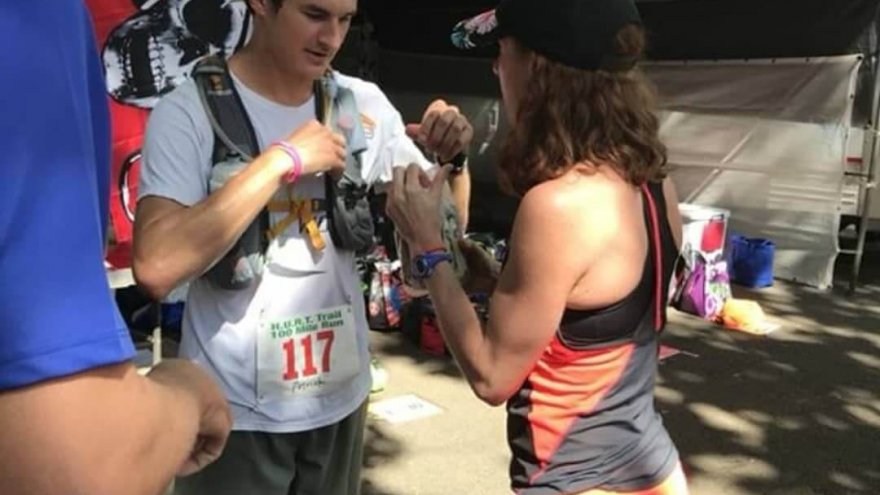
What it Takes to Crew for an Ultra Marathon
“This is MY decision! I want to drop out at the next aid station, and YOU. CAN’T. MAKE. ME. KEEP. GOING!” And with that ultramarathon runner, Patrick Stover stopped walking completely. There may have been a stomp of his foot, but in the darkness of 3 am, I couldn’t be sure. My then boyfriend, now husband, was at mile 75 of the HURT 100-Mile Trail Race, and he was throwing a mild temper tantrum. I consider myself an enthusiastic, super planner who is well versed in cheering for endurance athletes, but this was my first time being part of a crew for an ultramarathon… and I was in over my head!
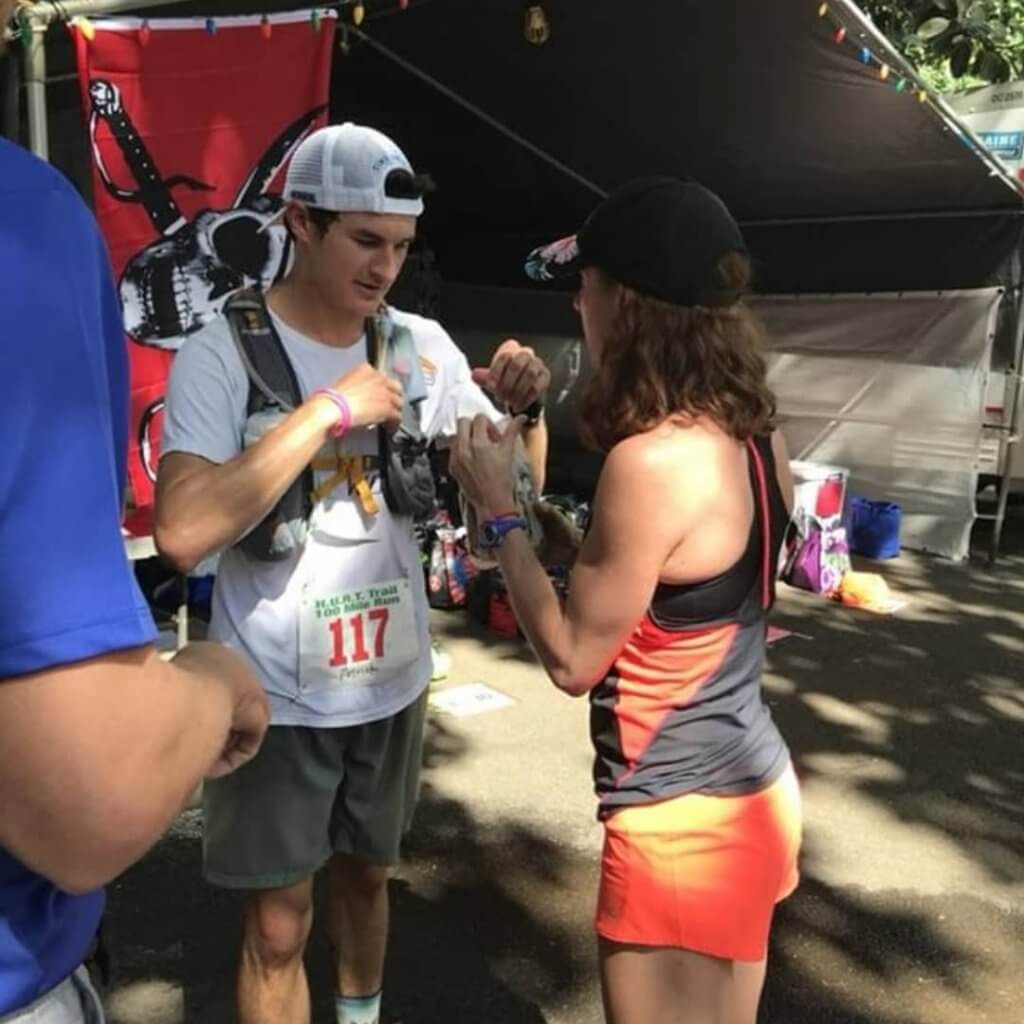
“You’ve come so far! Let’s just get to the Nature Center and we’ll decide then!” was my reply. The Nature Center was the next and last aid station of HURT 100. When Patrick wasn’t looking I sent a quick text to the rest of his crew, waiting at the Nature Center, alerting them that they needed to be prepared to rally hardcore when Patrick came through. It would take more than my cheering to get him to the finish line! He was shuffling along the bamboo-lined trail now, but still threatening to quit.
Fortunately, a friend ran by around mile 78, shouting that Patrick had plenty of time to finish. This encounter with a fellow ultra runner and the sun rising in the distance was the magic combination that got my husband running again. As I watched Patrick take off on the heels of our friend Sergio, it became clear that I had largely underestimated the skills required to crew for an ultra runner!
Have a Good Attitude and Thick Skin
This skill makes it to the top of the list simply because it should be the first thing you consider when asked to crew for an ultra marathon. If you can’t handle having a water bottle thrown at your feet or the sight of blisters on top of blisters, you may want to kindly decline the offer to crew.
“How amazing that we get to run through this beautiful bamboo forest!” I exclaimed to Patrick before our interaction with Sergio, hoping my positivity would be contagious. It wasn’t. It was 2 am and this was his fourth time running through the same forest. He expressed his disdain for the bamboo trees and bright stars and everything about the course in so many words.
Pointing out the beautiful scenery is not always a mood-booster for a sleep-deprived runner, especially if they are running a multi-loop course. But a smile while assuring your ultra runner that they look strong can go a long way!
“Aim for moderate enthusiasm,” says Rachel Durkin, who has crewed for her husband Mike at several ultramarathons, including the Leadville Trail 100 Race. Providing encouragement without being annoyingly energetic and optimistic is key. Crewing for ultra demands that you be patient, positive, and detail-oriented without taking things personally if your runner gets cranky. It also requires driving, possibly further than your athlete will run, and likely down remote dirt roads to reach aid stations which may or may not have cell service.
Bring Maps and Take Notes
Be sure to print out the course map, along with directions to the race start, finish, and to the aid stations as back up in the likely event that cell service fails. Print out the athlete guide and a crew guide if it is provided as well. In these, you will find all the race rules and important policies.
“The rules usually stipulate any and all aid must be given at aid stations,” reminds ultra runner Anthony Bianchi of Tempe, AZ, who has run eight ultramarathons since 2017. “Don’t get your athlete disqualified by handing off aid at undesignated locations or pacing them too early in the race.”
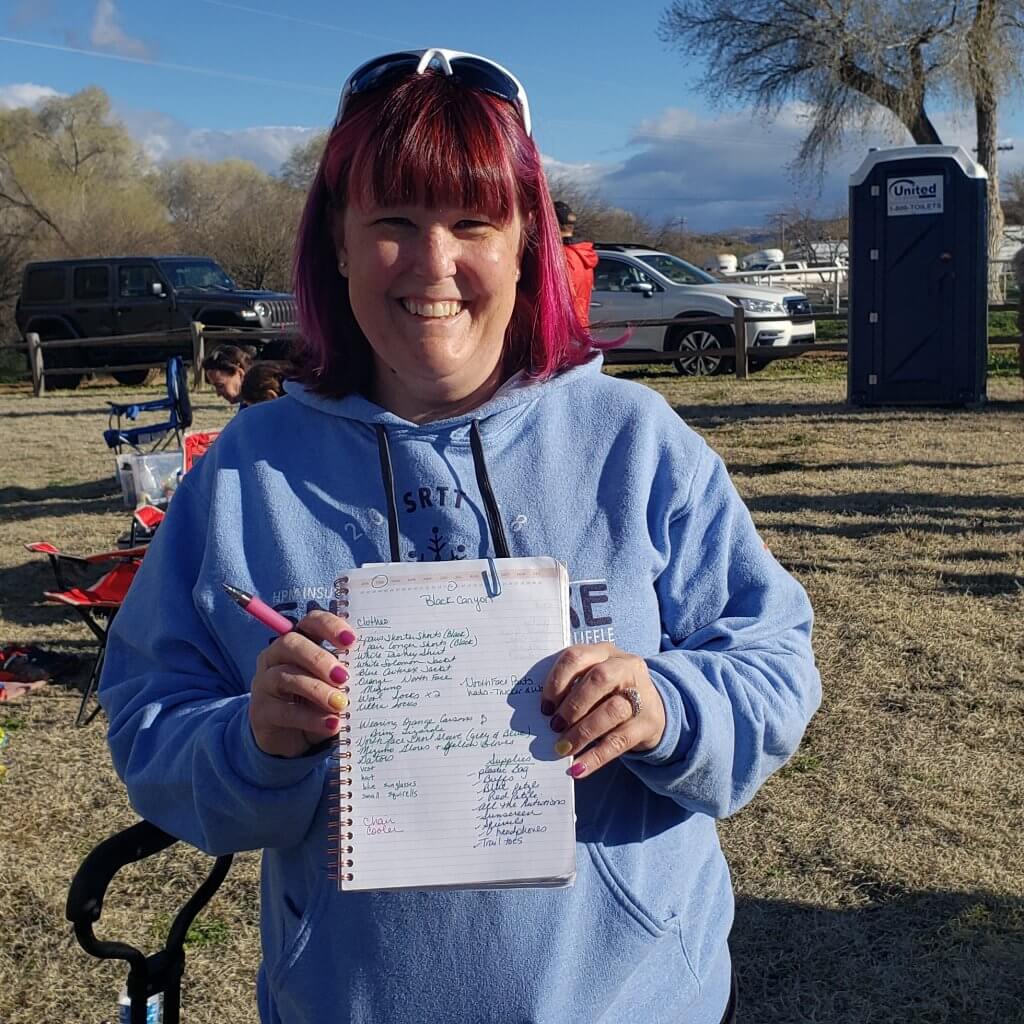
Your runner may be too distracted in the days leading up to the race to thoroughly read every update posted on the race website. Take the initiative to do it yourself. Make notes, jot down questions, and set up a time to go over them with your runner after the race’s athlete meeting or packet pick-up. Often times, many questions get answered during the athlete meeting, but insist on that pre-race meeting anyway!
Pre-Race Meetings are Crucial
Your athlete naturally has a lot to attend to the day before their big race, but spending a few minutes with them could be the difference between life and DNF. Discuss what aid stations you can access, and which ones your runner needs you at. Determine the window of time in which you can expect to see the ultra runner, then show up at the aid stations at least 15 minutes before that time.
Decide what you will have at each station: Is there a change of clothes you should bring for the runner? Will they need sunscreen or a headlamp? Do they have a specific gel they would like you to hand off to them at certain mile markers? A favorite snack from the aid stations? Or do they just want help refilling bottles, and a familiar face to cheer them on?
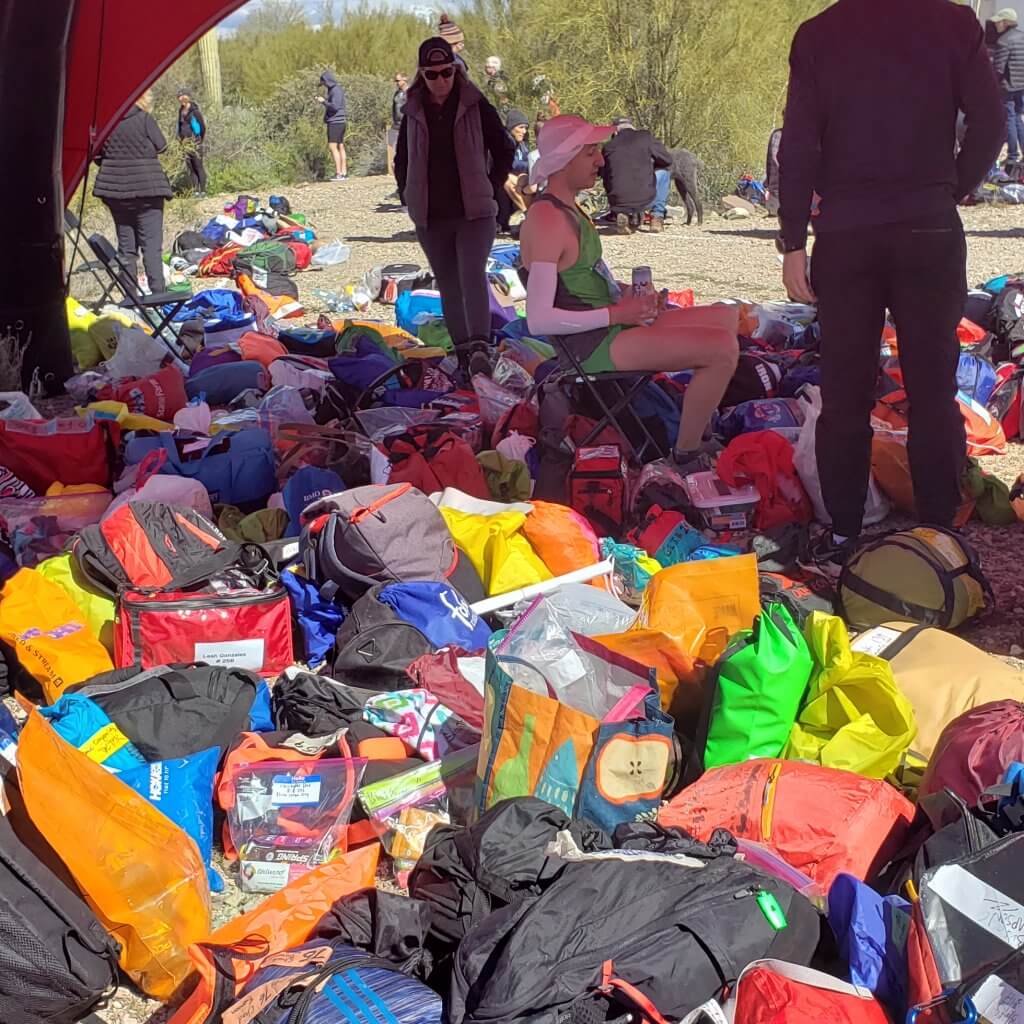
Have a conversation about the runner’s fueling strategy, and how you and your athlete will handle inconveniences like loss of appetite! Will your runner ask that you let them make the call about what they can and can’t consume, or expect you to sternly insist that they eat the food you will have waiting at the aid stations? Make a list of what your ultra runner will need at each aid station, or help them pack and label plastic zip bags for each leg of the race if possible.
“Knowing your athlete is key,” emphasizes Todd Weinmann, who has crewed for four ultramarathons, as well as the EPIC 5 Challenge. “Have a heart-to-heart talk with them before they even start about what you’re going to do and ask them what they need. Follow the plan.”
Take Care of Yourself, But Be Selfless
You won’t be able to crew like a boss and care for your runner if you are low-blood sugar and unable to think clearly yourself. As many ultra races are staged on trails that take athletes into remote locations, you can’t always count on restaurants or grocery stores for meals on race day either. Once you come up with a game plan with the ultra runner regarding what nutrition you will provide to them and when, pack everything necessary to stay fed, hydrated, and caffeinated yourself so you don’t run out of gas. For that matter, fill your gas tank before you even head to the race start so you have one less concern during the ultra!
In addition to bringing your food and drinks for the day, prepare for a nap if your athlete will be running through the night by packing a blanket and pillow. In general, be prepped for lack of sleep despite the nap, but make every effort to be as alert and energized as the situation allows.
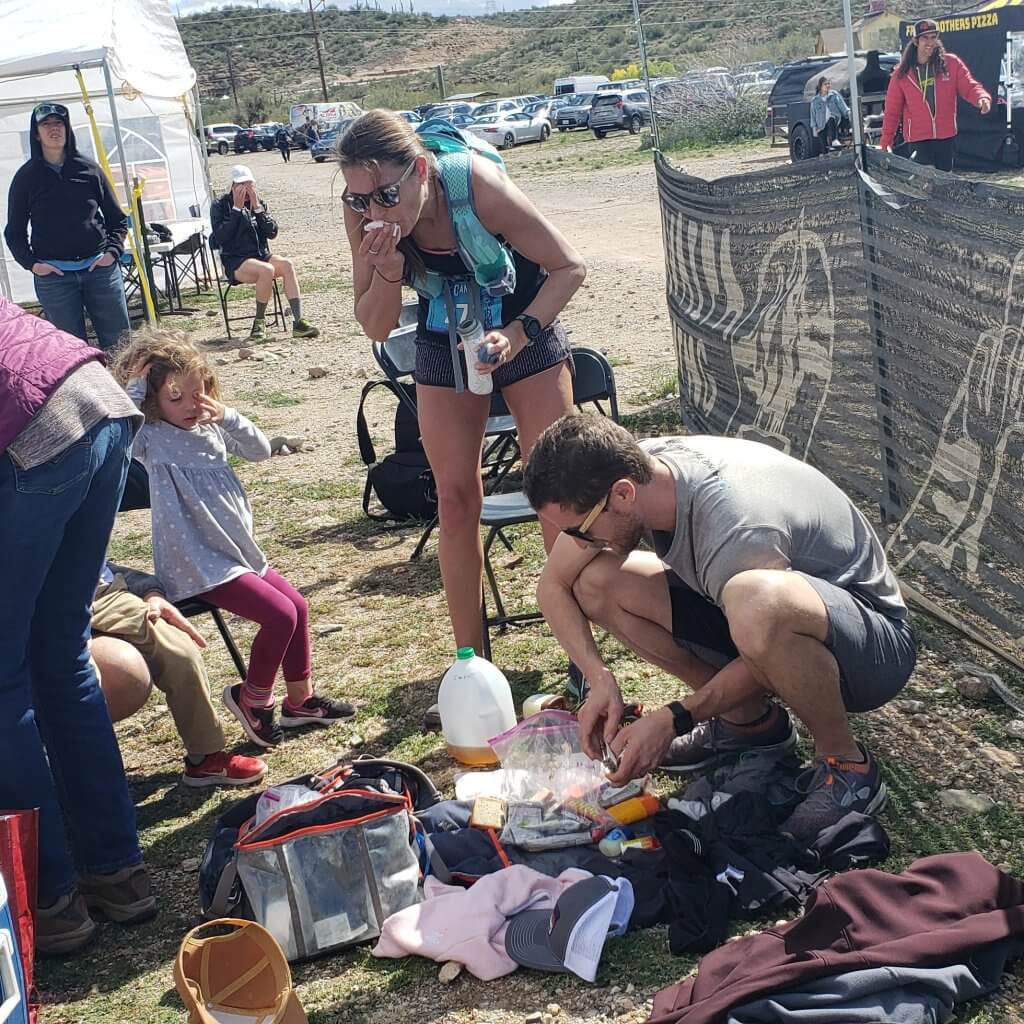
Be prepared to set aside your personal whims for the day or weekend. You may have to sacrifice your own training, which is better than the risk that you won’t be available for your ultra runner when and where they need you. So yes, you may have to save sightseeing for another time!
Be ready to motivate the dead back to life by knowing your runner’s goals and reminding he or she how close they are to attaining them. If it is to qualify for the Western States 100, which entails that they finish their ultra race in a given amount of time, be aware of what pace they have to run, and what it will take to keep them on track to run that pace.
Know Before They Go
The importance of knowing what pace your athlete will run goes beyond cut-offs and qualifiers. To determine when they will hit each aid station, make note of what time it is when your ultra runner arrives at the first aid station, then calculate their pace based on the start time and how many miles they have run.
Stephanie Bianchi, who has crewed for dozens of ultra runners including her husband Anthony, recommends tracking your athlete implementing LiveTrack on Garmin Connect™ Mobile. This app allows crews to receive a link that includes the position of the runner’s connected device or phone in real time. Even in remote locations, it takes the guesswork out of athlete tracking.
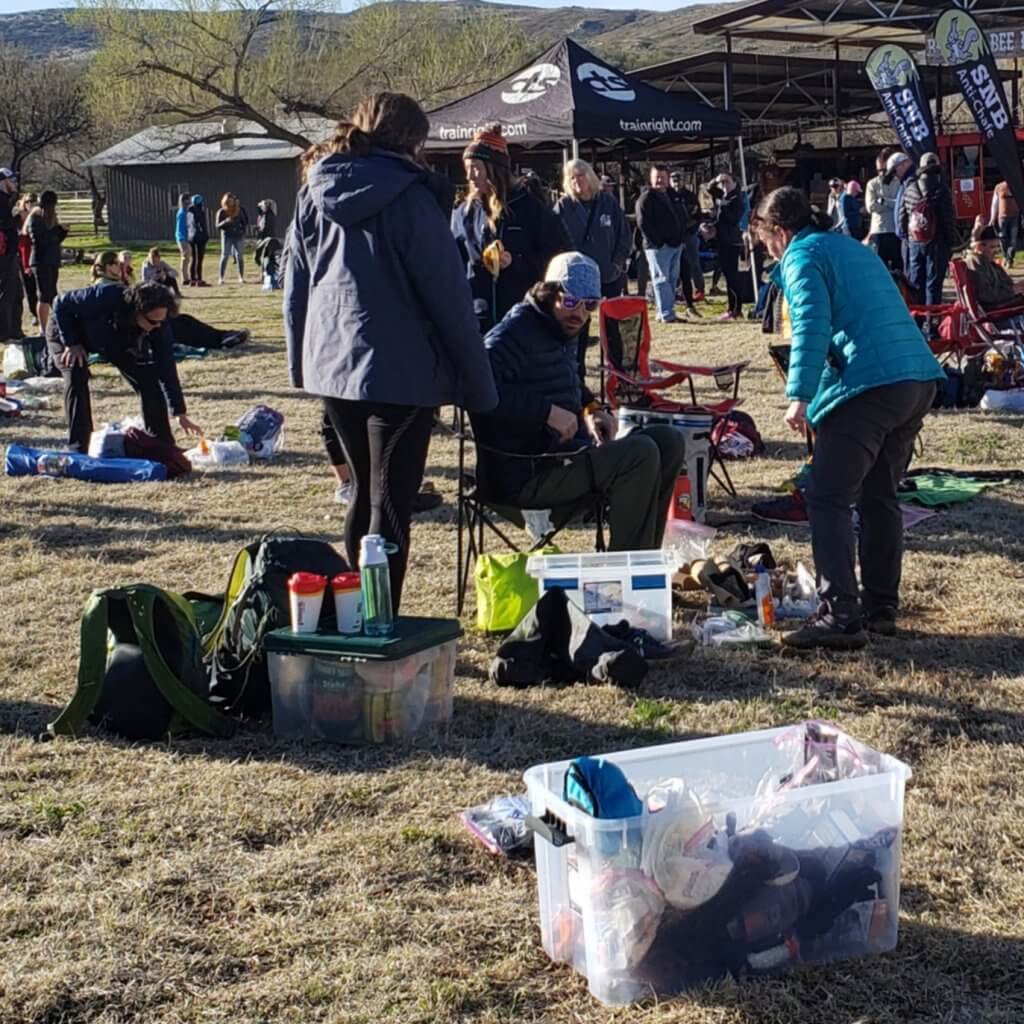
Take into consideration any other factors that would result in a change of pace, like the course’s terrain and elevation, and the weather conditions. Checking the weather forecast both before and during the race will also help you prepare for the ultra runner’s physical and mental needs. If an athlete is running in the noon-day sun or on a humid day, electrolytes and sunscreen are a must. Be ready to apply the SPF for them, hand them a cup of ice, have their electrolyte mix ready, and refill their pack’s bladder with water. If they are about to head out for a night loop, make sure the ultra runner has a fully-charged headlamp. If they just came in from a rainy, muddy loop, a disposable wipe, clean socks, and change of shoes may be in order, so have those accessible!
Deliver the Goods
Athletes who plan to switch out hydration packs throughout the ultra marathon can show their crew how they want gels, bars, and bottles to be arranged in their pack before the race, which will minimize the amount of time spent at an aid station.
When Anthony’s wife Stephanie crews for him, she stocks up a collapsible wagon with nutrition, a cooler with his sports drinks, extra clothes, a camping chair, and anything her husband might need. This method allows Anthony to run through the aid station, easily grab what he needs, and get back out on the course.
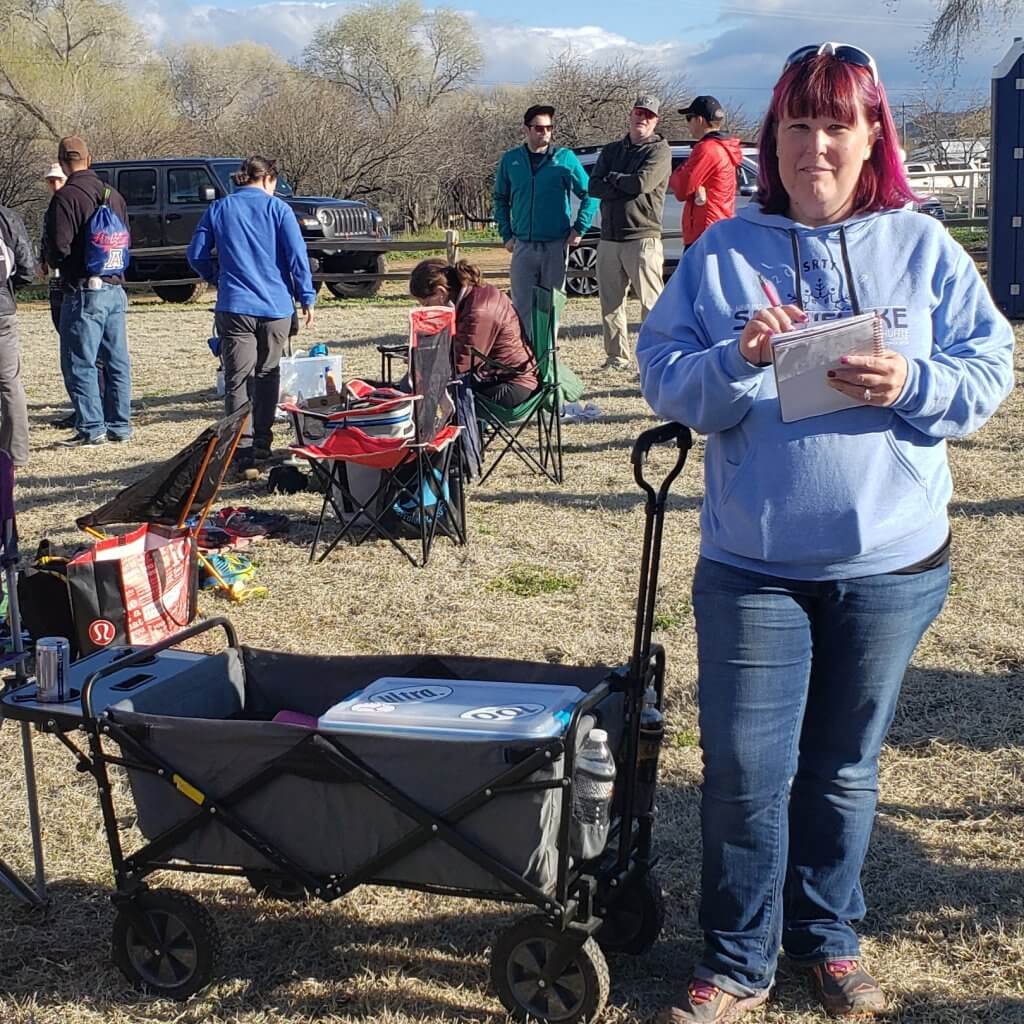
Having all nutrition laid out on a blanket or table is also a popular option for ultra runners. “I’ve used a backpack that hauled spare sneakers, socks, gloves, first aid kit, fuel, plastic bags for garbage or wet clothes, heat blanket… I literally would have it all laid out, and once the athlete blew through, shoved it all back in and headed off to the next spot,” says Arline Guinn of Nashua, NH, who has assisted in many marathons and ultra trail races.
I have resorted to the well-organized backpack approach myself. In it are several plastic zip bags, each with enough nutrition to get my husband through about 20 miles, along with extra fuel, a change of clothes and shoes, a raincoat, and anti-chafing salve. When he comes through the aid stations, I run alongside him to whatever spot he chooses so I can easily access the fuel he asks for, and any other necessities he requests.
Consider bringing an ice pack or cooler, which can be fantastic ways to keep water and sports drinks cool during a desert race. Hand warmers are helpful during high-altitude races, especially when the sun goes down. Although most aid stations will have first aid kits, carrying your own can be a time saver if your runner simply needs a bandaid or blister pad. Bring a strong stomach too! Blisters, lost toenails, sweaty socks, vomit, and the need to help your runner change out of clothes covered in mud, or worse, is a reality in ultra racing!
If you are crewing with several people, be flexible. Your responsibility may be as a pacer, but be prepared to pitch in should the crew captain ask for your help with finding bandaids or filling water bottles.
Communicate
To ensure efficiency at aid stations, give clear, concise answers to any questions your ultra runner asks. Additionally, get the phone numbers of other crew members and possibly family ahead of time, and be ready to communicate to them throughout the day.
In the Black Canyons 100k Ultra Race, flooding resulted in a course change that I had to advise my weary runner off. Do stay in contact with race volunteers so you can be advised of any unexpected developments, and tell your runner the pertinent information. Don’t overwhelm your runner with the details of the day when you interact with them throughout the race unless you determine that it is necessary.
Show Some Tough Love
A tired, cranky runner may fight you on leaving the aid station. In the dark moments (and there will be dark moments) they may threaten to quit. Unless they are injured or ill, you can get runners moving by reminding them of times when they’ve displayed tenacity in the past, or how they would regret it if they dropped out.
When Patrick started complaining about fatigue in the Black Canyon 100k, I handed him a cup of flat cola while asking if he was sick or injured. He confirmed that he wasn’t so I told him “Then you can keep going! This soda is going to kick in soon and you’re going to feel a lot better!” With that, I nudged him back onto the course.
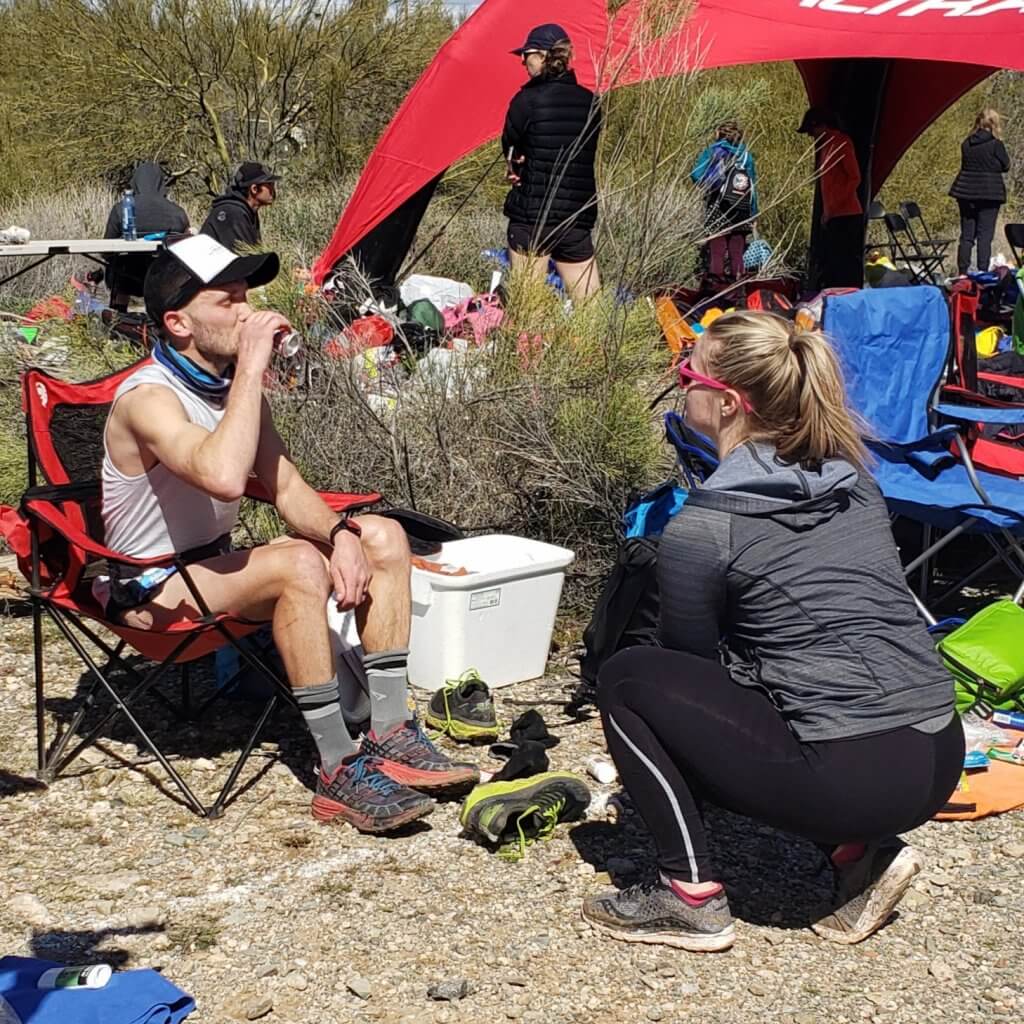
“Sometimes being stern with them to take their nutrition is key as well, as hard as it may be to argue with an athlete,” suggests Mercedes DeCarli, who has crewed at the UltraMan World Championships in Hawaii. Short of shoving food in a runners mouth, you can coerce them into eating if they refuse by handing them the predetermined fuel and telling them that by the time you see them at the next aid station, it better be consumed. No exceptions!
Don’t underestimate the help of another runner to get them back out on the trail either. If your athlete’s motivation is waning, encourage them to leave the aid station with a nearby runner.
“Rise above your own personal issues and transfer all focus towards the goal of assisting your athlete towards completion of the race,” says crew expert Joe Barcia of Keaau, HI. “Use diversions and questions about life to keep their mind occupied and engaged.”
The Finish Line is Not the End
Think you’re off the hook once your runner finishes? Think again!
You may be ready to party at the finish line, but your athlete may not share your sentiments. My husband often has a small crowd of friends, family, and crew members waiting for him. I am now in the habit of communicating with them that he may not be ready for the fanfare of the finish line the moment he stops running so that they aren’t disappointed if he disappears for a few minutes.
Don’t be shocked if your runner stumbles across the finish line and vomits, bursts into tears, or just makes a beeline to the porta-potties. Do be ready to give hugs and high-fives when your runner returns! There will be plenty of time for post-race celebrating after you attend to your sore, tired ultramarathon finisher. Bring them food if they can get it down, bring them back to their hotel room if that’s what they request, or just gather up their gear bags… while telling them how awesome they are!
And remember, as part of an ultra runner’s crew, you’re pretty amazing yourself!
“Steph makes sure I’m eating and drinking enough. She keeps my head in the game and my goals in check, but crewing is so much more than that! She is at the start line with me before the sun. She drives down sketchy roads to get to remote aid stations… She is ready with anything I need while often being sleep deprived and hungry in the middle of the night,” says Anthony when asked about trusting someone enough to make them part of chasing his ultra-sized dreams.
“Anyone can fill a water bottle, but it takes a special type of person to give so much of themselves and their time to help a runner get to the finish line. None of this is ever lost on me, even when I am less than friendly because I’m exhausted and calorie deficient… And it really makes a difference!”
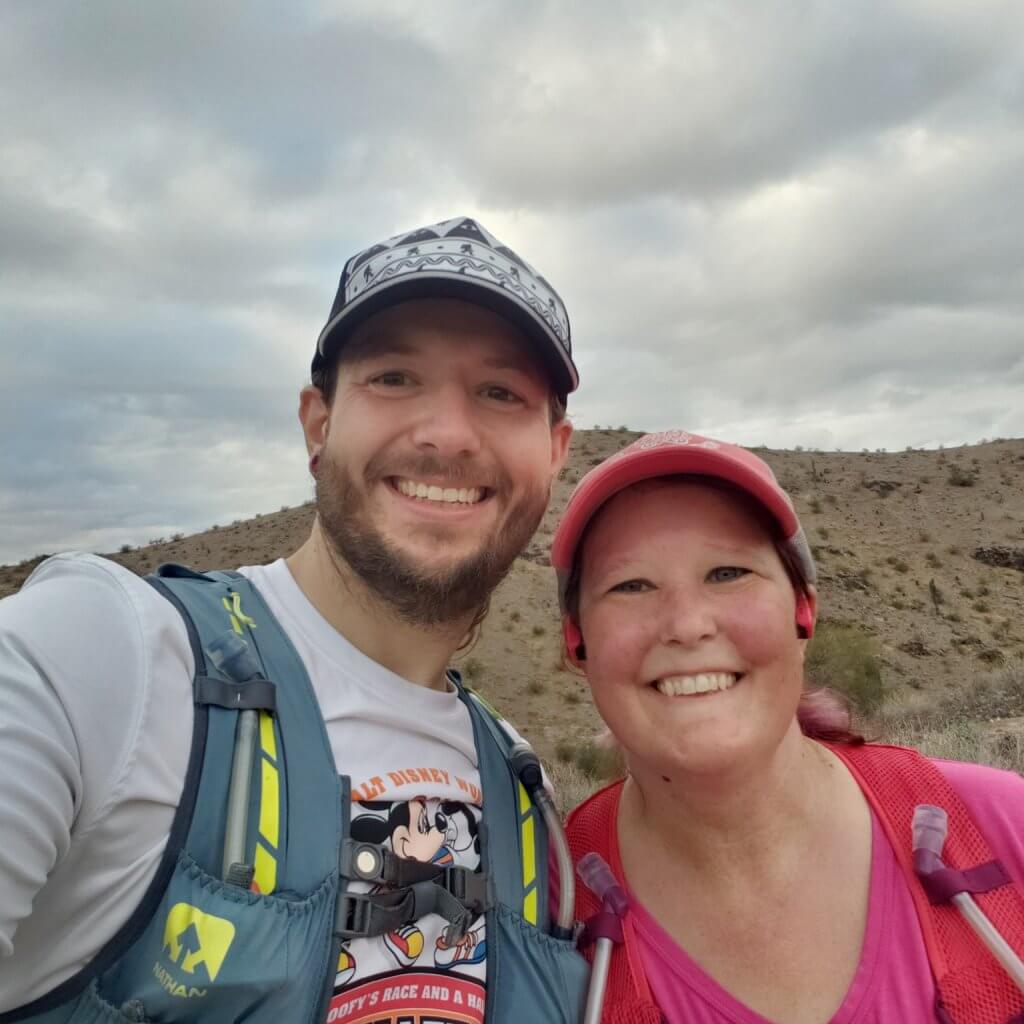
Sources
- ,
Latest Articles
 Is Running on a Treadmill Easier Than Running Outside?Runners have their own preferences, whether it is treadmill running, running outside on the road, or exploring trails. So...
Is Running on a Treadmill Easier Than Running Outside?Runners have their own preferences, whether it is treadmill running, running outside on the road, or exploring trails. So... Is It OK to Use Trail Running Shoes on the Road?While trail running shoes can be used on roads, especially in situations where a runner encounters mixed terrains or pref...
Is It OK to Use Trail Running Shoes on the Road?While trail running shoes can be used on roads, especially in situations where a runner encounters mixed terrains or pref... How to Fix Sore Quads After Running?Rest, ice, gentle stretching, and over-the-counter pain relievers can help soothe sore quads after running. Also, ensure ...
How to Fix Sore Quads After Running?Rest, ice, gentle stretching, and over-the-counter pain relievers can help soothe sore quads after running. Also, ensure ... 10 Fruits With The Most Electrolytes to Replace Sports DrinksThese fruits are high in electrolytes such as potassium, magnesium, and calcium, essential for hydration, muscle function...
10 Fruits With The Most Electrolytes to Replace Sports DrinksThese fruits are high in electrolytes such as potassium, magnesium, and calcium, essential for hydration, muscle function...

